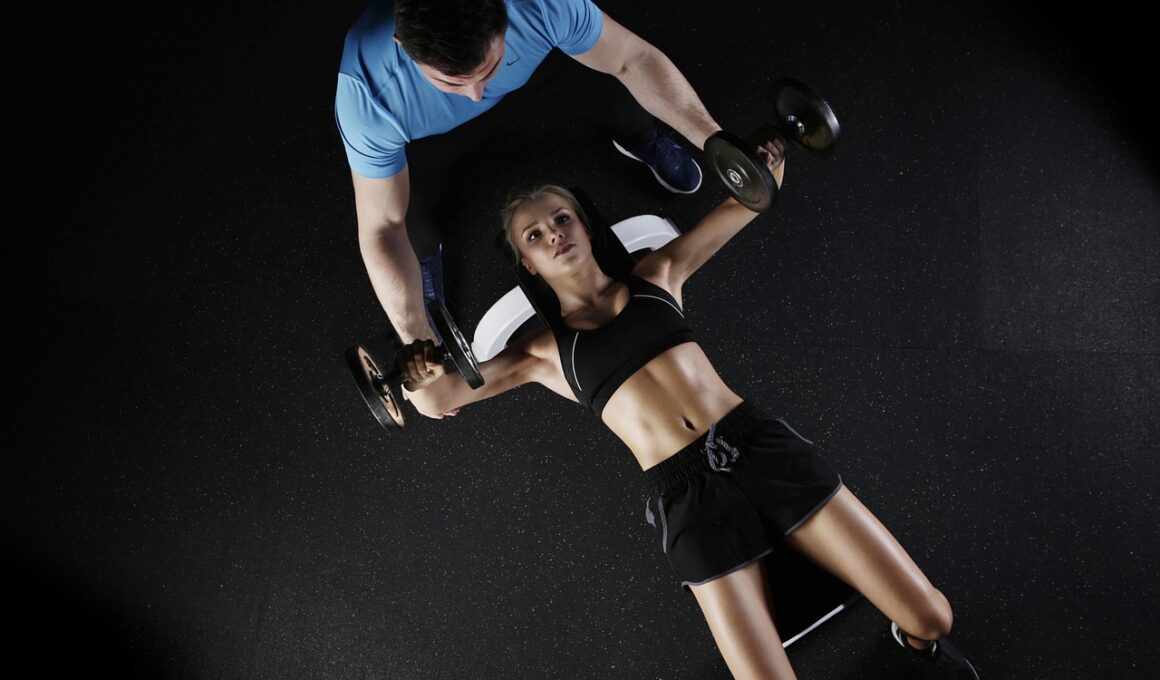Effective and Easy: Top 10 HIIT Exercises for Beginners
High-Intensity Interval Training, commonly known as HIIT, is an excellent exercise regimen for beginners looking to improve their fitness levels effectively. HIIT workouts combine short bursts of intense activity followed by brief recovery periods, making them both efficient and adaptable for any fitness level. One of the most significant advantages of HIIT is its ability to burn calories quickly, and it can be performed virtually anywhere without elaborate equipment. For beginners, these routines can be tailored to fit personal capabilities, ensuring you stay motivated and do not experience burnout. In this article, we will explore the top ten HIIT exercises beginner-friendly that you can do anywhere. Engaging in these activities can kickstart your fitness journey while keeping your workouts exciting and varied. Many people appreciate the flexibility HIIT offers; you can adjust the duration and intensity as your fitness improves. In the following paragraphs, we will highlight each exercise and explain how to perform them safely and effectively. Prepare to elevate your heart rate and seize the opportunity to transform your body with these dynamic workouts.
1. Jumping Jacks
Jumping jacks are an ideal warm-up exercise, building cardiovascular endurance without any special equipment. To perform jumping jacks effectively, begin by standing with your feet together and arms at your sides. Jump while simultaneously spreading your feet wider than your shoulders and raising your arms overhead. Repeat this movement, focusing on maintaining a steady rhythm for 30 seconds to one minute. Jumping jacks are an excellent way to increase your heart rate rapidly and warm up the muscles. They also engage multiple muscle groups, including your arms, legs, and core, promoting overall body coordination and stability. As a beginner, start with a manageable number of reps and gradually increase the duration and intensity as you gain confidence. Mixing in variations, like high-knee jacks or side-to-side jacks, can keep the exercise interesting. You can also count your jumps to set small goals that encourage you to push your limits. Remember to maintain proper posture throughout the exercise, keeping your core tight and avoiding excessive bending in your knees or hips for added safety and effectiveness.
Another excellent beginner HIIT exercise is the burpee, combining strength training and cardio seamlessly. Start in a standing position, drop into a squat, placing your hands on the floor, then kick your feet back into a plank position. After holding this position briefly, jump your feet back to your hands and leap into the air, reaching your arms overhead. Burpees can be modified by omitting the jump or plank if they are too challenging initially. Focus on maintaining a consistent pace while ensuring your form stays correct to prevent injury. These exercises boost your endurance and strength, working your chest, arms, quads, glutes, and core. Aim for a set number of reps or timed intervals to structure your workout effectively. Even though burpees might be initially daunting, remember that regular practice will increase your proficiency and agility. You can incorporate variations such as push-up burpees or lateral burpees to further elevate intensity. This exercise is a total body workout that ultimately contributes to your overall fitness goals, making it an essential inclusion in any beginner HIIT routine.
3. Mountain Climbers
Mountain climbers are another excellent addition for beginners looking to challenge their cardiovascular fitness and core strength simultaneously. Begin in a high plank position with your hands directly under your shoulders and your body aligned from head to heels. Functioning as if you are running in place, bring one knee towards your chest and then quickly switch legs, aiming to keep a steady rhythm. The movement engages your abs, shoulders, and legs, enhancing coordination and agility. As you master this exercise, you can increase speed and intensity, working towards higher energy bursts and improving your overall fitness level. To avoid potential strain, focus on keeping your hips high and back straight during the movement. Include mountain climbers in your warm-up or workout routine in timed intervals of 20-60 seconds, allowing brief rests in between. You may start slowly and gradually build toward faster movements as your endurance grows. Additionally, consider incorporating side-to-side movements or cross-body variations to target different muscle groups over time, making your workout both challenging and diversified.
Next up are high knees, an exhilarating exercise that engages your lower body and core while boosting cardiovascular fitness. Start by standing tall with your feet hip-width apart. Quickly raise one knee to hip level while swinging your opposite arm, then alternate legs rapidly. Aim to perform high knees in intervals, keeping the intensity high and the movement quick. This exercise not only enhances speed but also improves your overall coordination. As a beginner, start with shorter intervals of 20-30 seconds, gradually increasing your time once you feel comfortable with the form. You can add variations, like holding dumbbells or focusing on lateral movements to make it more exciting over time. High knees can effectively increase your heart rate and metabolic rate, making them excellent before or after intense workouts. With consistent practice, you’ll notice an improvement in leg strength and endurance while burning calories efficiently. This exercise can be integrated into your HIIT routine for greater effectiveness and can be tailored based on your comfort level and fitness goals.
5. Bodyweight Squats
Bodyweight squats are a fundamental exercise targeting your lower body muscles, specifically your thighs, hips, and glutes. Begin by standing with your feet shoulder-width apart and your toes slightly pointed outward. Lower your body into a squat position by bending your knees and pushing your hips back as though you’re sitting in a chair. Make sure to keep your chest upright, core engaged, and avoid letting your knees extend beyond your toes. This exercise can be performed slowly to perfect your form before transitioning to faster squats in intervals. Start with three sets of 10-15 reps, increasing the number as your strength and confidence improve. Bodyweight squats can be included throughout your HIIT routine, either as a warm-up or strength-building activity. By adding variations like jump squats or sumo squats, you can enhance difficulty and continue challenging your body. Effective squats not only build strength but also improve mobility and stability, making them essential for a well-rounded fitness program for any beginner in their HIIT journey.
The jumping rope is another classic exercise adaptable for beginners looking to boost their cardiovascular fitness. Not only does it improve coordination, but it also tones your legs and improves agility. Simply grab a rope and start jumping, keeping your elbows close to your waist and utilizing your wrists to spin the rope. Aim for intervals of 30 seconds and gradually increase as your skill and endurance develop. This exercise is exceptionally versatile, as it can be modified to include different patterns like double unders or side-to-side hops to maintain excitement and engagement. Jumping ropes can be easily incorporated into your HIIT routine by alternating between intense jumping intervals and brief recovery periods. Aim to switch your tempo to enhance your stamina and balance further. Beginners may find it helpful to practice without the rope initially, focusing on the technique before incorporating the equipment. A good-quality jump rope is a small investment that can provide substantial benefits, making this workout a fun and engaging choice for fitness enthusiasts looking to kickstart their HIIT journey.
7. Plank Jacks
Plank jacks combine the strength benefits of the plank exercise with cardiovascular conditioning, making them ideal for beginners. To perform plank jacks, start in a high plank position with your hands directly under your shoulders, body straight from head to heels. While maintaining this position, jump your feet out wide and back together, similar to a jumping jack motion. Focus on keeping your core tight and hips stable throughout the movement to maximize effectiveness and prevent injury. Beginners should start by incorporating 20-30 seconds of plank jacks into their routine, allowing short recovery periods between sets. As your strength and endurance improve, you can increase the duration and reps, maximizing your cardiovascular workout. Plank jacks also help improve upper body and lower body strength while engaging your core, providing benefits beyond cardiovascular training. You can also mix different variations, such as side plank jacks, to target your obliques and enhance your overall core stability. This unique exercise deserves a spot in any beginner’s HIIT routine for its versatility and overall body engagement.


